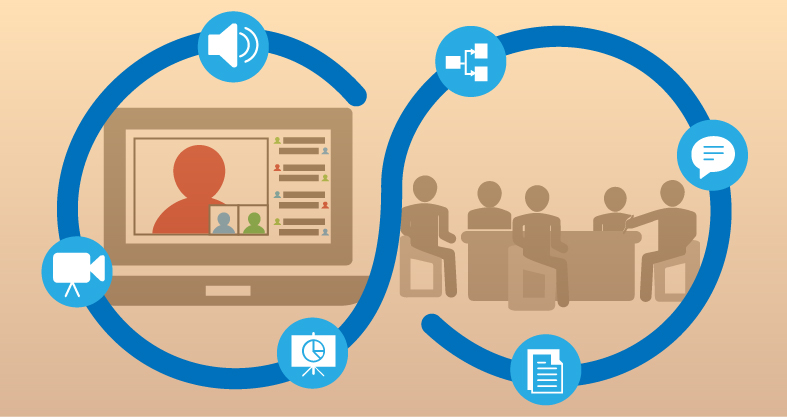Ample flexibility to configure your learning space

Dr. Jayakrishnan M, IIT Bombay
Computer Science and Engineering
June 2018 (I) By Dr. Veenita Shah
Dr. Jayakrishnan M, a Project Research Scientist in IIT Bombay, has conducted several MOOC programs, including various faculty development programs through IITBombayX. Having accomplished as a learner, served as a teaching assistant, and finally as an instructor for several courses, Dr. Jayakrishnan exhibits a wide spectrum of experience with MOOCs. “It was not something new to me as an instructor, as I had undergone this training as a student which further got strengthened during my Ph.D. research on ‘A Model for large-scale training of teachers in effective technology integration.’ MOOCs provided me a platform where I could relate to my philosophy regarding online learning, and translate it effectively,” he told.
MOOCs are one way of democratizing the education space, particularly the higher education. Today, there is a distinct demarcation of fields creating different subject silos in education sector. However, Dr. Jayakrishnan believes that there are no such silos in the real world, which requires us to be functionally upgraded in diverse arenas. “We are fortunate enough to be a part of the generation in this transformative age where the technology is taking shape. We can relate well to the four-walled classroom learning as well as easily deploy the online learning platform. Thus, as MOOC instructors of this era, we need to take steps forward in this direction to make MOOCs an enriching learning experience for all,” he said.
“We are fortunate enough to be a part of the generation in this transformative age where the technology is taking shape.”
As we agree, MOOCs complement our existing learning resources. It permits the learner to review the videos unlimited number of times as opposed to the students’ reluctance in asking the instructor to repeat a concept in the classroom. In regards to this, Dr. Jayakrishnan states, “MOOCs provide ample flexibility to participants to choose and configure their learning space. It also provides you the access to recognized faculty members from esteemed universities. The established connections with the faculty and fellow participants, and the learning experience shared with the diversity are some of the unmatched benefits of MOOCs.”
Choice between the instructor-paced and self-paced MOOCs really depends on the context of learning and the target audience. Adding to this, Dr. Jayakrishnan explains, “In our faculty development programs (FDPs), while teaching regarding webpage creation, I would opt for an instructor-paced course with sufficient flexibility. However, if we want to help the teachers with integration of different technologies in their classroom, I would rather offer it as a self-paced course with the flexibility to select and learn whatever they wish and desire. I would still strongly recommend personal interactions with the participants throughout the course.”
“If the instructors are not able to capture students’ interest in their content, the point of MOOCs is lost.“
It is about our attitude and belief towards the technology and the teaching-learning process, which can help us make a difference, and reach to the masses. Dr. Jayakrishnan reminds us about the genesis of MOOCs that comes from the connectivist theory, based on using the digital technology to create new opportunities for people to learn and share amongst themselves. The transactional distance, defined as the physical distance between the learner and the teacher, leading to psychological and communication gap between them, is one of the major disadvantages of MOOCs. Dr. Jayakrishnan points out that it involves both emotional and cognitive components to it, since the students lacking a connect with the teacher, may also not be able to process the content as well. Thus, it is the responsibility of instructors to design the content carefully, and use the technology wisely. “If the instructors are not able to capture students’ interest in their content, the point of MOOCs is lost. It is rather a challenge for all instructors to design and tailor their content and learning activities in a way to engage the diversity of participants throughout the course. Though the task of engaging the participants in a course is equally demanding in a classroom; however, the magnitude of this challenge augments with scale. In our courses, we insert reflection spots, comprising in-video questions followed by an explanation, which imitates a learning dialogue between an instructor and the learner in a classroom. Presently, most of the discussion forums on MOOCs are open-ended, whereas instructors should aim towards more focused discussions with a push towards peer collaboration. To ensure the same, we have been conducting a small reflection quiz in our courses, which is intrinsic to discussions on the forum. As a result, we have evidenced significant improvement in their participation on the discussion forum,” states Dr. Jayakrishnan.
From factual evidences, it is known that interaction with the teacher increases the learning alacrity amongst the students. Similarly, personal communication with instructors, through various modes of digital interaction, multiplies the sense of achievement for MOOC learners. Dr. Jayakrishnan suggests that the instructors may also visit some of the participating institutions to increase their connect with the students, and learners’ enthusiasm towards the course. “In our MOOCs, we attempt to incorporate periodic mass emails to participants, conduct face-to-face interactions or maintain constant connect through social networks to increase the morale of the learners. Thus, some sort of hybrid mechanism is required to offer personalization to learners, and address the diversity quotient involved in MOOCs,” he explained.
At IITBombayX, there are multiple teams involved in different aspects of MOOC design and development. Dr. Jayakrishnan explains the role of the content team in setting up of the MOOC, and providing suggestions on course instructions; the workshop team in coordination and organization of the FDPs; the video team in recording and editing of the video content; and the accounts team in taking care of the financials, to name a few. “Interacting with different teams involved in running of a course at a massive scale provides an insight on a lot of operational nuances and challenges that each of these teams face, while actually putting instructors’ thoughts into the available software. Thus, it is important for an instructor to individually interact with these respective teams to understand the working of MOOCs. Lastly, I would like to state that the IITBombayX team works as a whole to make this challenging task possible,” he concluded.




